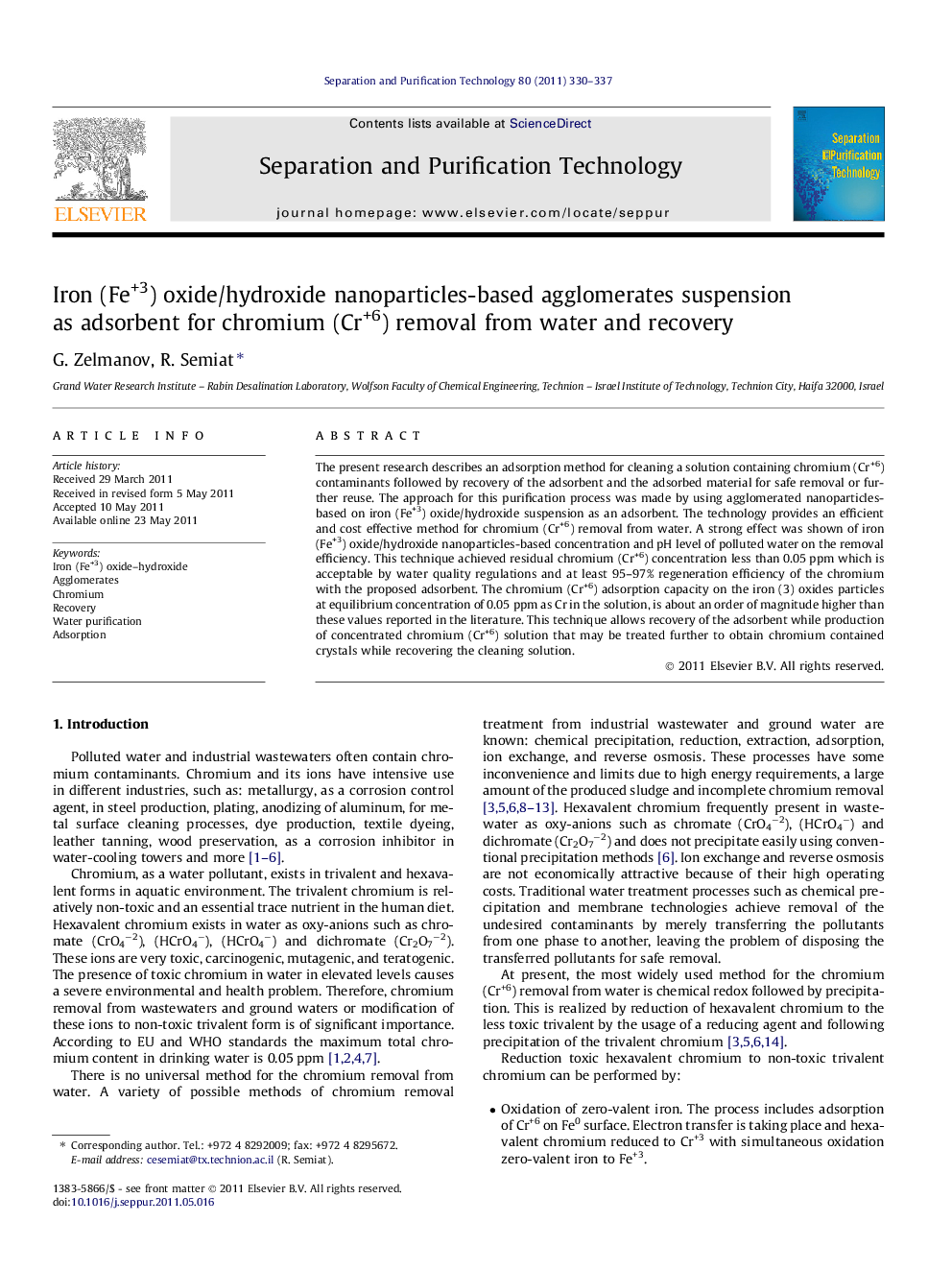| Article ID | Journal | Published Year | Pages | File Type |
|---|---|---|---|---|
| 642608 | Separation and Purification Technology | 2011 | 8 Pages |
The present research describes an adsorption method for cleaning a solution containing chromium (Cr+6) contaminants followed by recovery of the adsorbent and the adsorbed material for safe removal or further reuse. The approach for this purification process was made by using agglomerated nanoparticles-based on iron (Fe+3) oxide/hydroxide suspension as an adsorbent. The technology provides an efficient and cost effective method for chromium (Cr+6) removal from water. A strong effect was shown of iron (Fe+3) oxide/hydroxide nanoparticles-based concentration and pH level of polluted water on the removal efficiency. This technique achieved residual chromium (Cr+6) concentration less than 0.05 ppm which is acceptable by water quality regulations and at least 95–97% regeneration efficiency of the chromium with the proposed adsorbent. The chromium (Cr+6) adsorption capacity on the iron (3) oxides particles at equilibrium concentration of 0.05 ppm as Cr in the solution, is about an order of magnitude higher than these values reported in the literature. This technique allows recovery of the adsorbent while production of concentrated chromium (Cr+6) solution that may be treated further to obtain chromium contained crystals while recovering the cleaning solution.
Graphical abstractChromium (6) removal at different AggFe concentrations. Initial chromium (6) concentration: 10 ppm as Cr. pH values of polluted solution and iron (3) oxide nanoparticles-based sorbent suspension: (▴) 4 and 6 (○) 6 and 4, accordingly.Figure optionsDownload full-size imageDownload as PowerPoint slideHighlights► This article demonstrates fast removal of Cr+6 from water by adsorption at affordable pH level. ► Removal is done according to water quality restrictions. ► Complete recovery of the adsorbent for reuse was shown, followed by contaminant removal as solid salt. ► Relatively high chromium adsorption demonstrated, at the permitted concentration level in comparison with literature. ► The finding may be a basis for a non-expensive process for complete removal of this contaminant.
